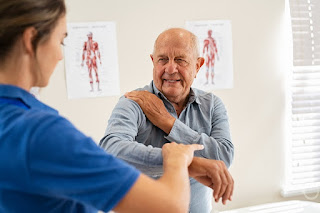Most people - men and women - experience myofascial pain syndrome at some time in their life, but it often goes undiagnosed.
What Causes Fascia Pain?
- Repetitive movement that strains one muscle group
- Poor lifestyle involving little or no movement
- Trauma to the area caused by injury or surgery
- Working or living in cold temperatures
- Emotional stress
- Pinched nerves
Is It Myofascial Pain Syndrome or Fibromyalgia?Both fascial pain and fibromyalgia pain feel very much alike, but there are ways to differentiate the two. Myofascial pain usually involves one area or one side of the body. Fibromyalgia is felt all over, and patients have more trigger points, worse sleep problems, headaches, irritable bowel, a sensation of swelling, and at times burning, prickling, or tingling across their body. Who Treats Myofascial Pain?Several types of healthcare professionals are capable of treating the pain caused by muscle fascia. You may be referred to a physiatrist, pain management specialist, rheumatologist, or orthopedist, as well as a physical therapist. |
When Is It Fascia Pain?
Treatment Options
- Medications include pain relievers such as ibuprofen (Advil and others) or naproxen sodium (Aleve). Your doctor could choose to prescribe something stronger that may come as a pill or patch. Antidepressants such as amitriptyline may tamp down your pain and have the added benefit of helping you sleep. Sedatives like clonazepam can treat anxiety and help you sleep, but they may be habit-forming.
- Physical therapies are both safe and effective. Using a hot pack or taking a warm shower can reduce pain. Massages can release muscle tension. Sound waves applied via ultrasound increase blood circulation and warmth. Light therapy with cold lasers may stimulate a release of pain-relieving chemicals in your bloodstream. Stretching exercises can also be very effective. A physical therapist may apply numbing solution on trigger points if you experience pain while gently stretching. TENS (transcutaneous electrical nerve stimulation) may be helpful.
- Needle procedures may be dry or wet. Inserting a thin needle in and around the trigger point (dry needling) may help release the contraction. Alternatively, needles may be used to deliver a numbing agent or steroid (wet needling) into the trigger point. Many fascial pain sufferers find acupuncture to be helpful.









